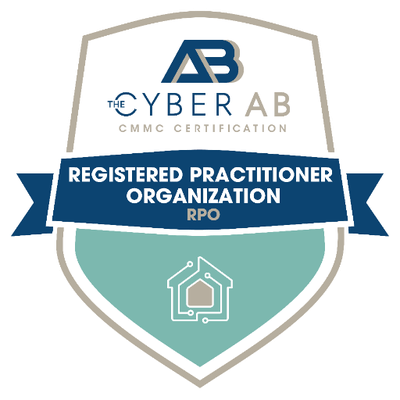Our privacy policy is located here.
Regulations and Compliance
See how risk-based Managed Detection & Response can help you with compliance — regardless of your industry
NYDFS Security Regulation FAQ
A CONVERSATION WITH RON PELLETIER, FOUNDER and CHIEF CUSTOMER OFFICER, PONDURANCE, AND RICHARD BORDEN, COUNSEL, WILLKIE FARR & GALLAGHER LLP
- The cyber regulation standards and if there are any commonalities
- What you need to do to meet SEC requirements
- The difference between privacy regulations and information security regulations
- What are the Department of Labor (DOL) guidelines, and how does it apply to cybersecurity
- How a cybersecurity provider can help you meet new security regulations
Insurance and Legal Partners
Pondurance works with legal and insurance firms, brokers and agents to help their clients improve their cybersecurity posture and reduce cybersecurity risks.
Reach out to us to learn more partners@pondurance.com
If you suspect you have an active breach, please contact us at 888-385-1720.

Keep Up With the Latest Blogs on Compliance and Regulations
Webinar
Reducing the Costs To Comply With CMMC

Successfully Navigating Through CMMC: What You Need to Know

Achieving CMMC 2.0 Compliance

Are you processing controlled unclassified information for Department of Defense clients and required to meet Defense Federal Acquisition Regulation Supplement requirements? Pondurance is here to help you achieve CMMC 2.0 compliance and better understand the gaps in your processes, capabilities, and practices.
Are You Looking for Specfic HIPAA Regulations?
Additional Resources
PCI DSS Compliance Made Simple by Pondurance
As part of Pondurance’s cyber risk and regulatory compliance assessment services, we offer a focused review of your IT systems environment to identify areas of risk and maturity as they relate to Payment Card Industry Data Security Standard (PCI DSS) compliance. READ HERE
NIST Cybersecurity
The National Institute of Standards and Technology Cybersecurity Framework (NIST Cybersecurity) is a strategic, industrywide blueprint designed to enhance and entrench cybersecurity practices across varied sectors in an increasingly interconnected digital landscape. The NIST Cybersecurity standardizes the process of identification, protection, detection, response, and recovery mechanisms in the context of cybersecurity risks, creating a harmonized and layered approach to securing operational and informational assets against cyber threats.
The NIST Cybersecurity was created by the National Cybersecurity Initiative. This forward-looking initiative was a focused step towards strengthening and safeguarding the country’s critical infrastructure and industries against cyber warfare and cyber spies. It represented a commitment to the collective security of public and private sector systems, devices, and networks, driving the development of formidable tools to tackle cyber risks and threats.
The NIST Cybersecurity framework is designed around a structure of tiers, enabling organizations to benchmark their cybersecurity readiness effectively. The four tiers range from ‘Partial’ to ‘Adaptive’, reflecting the progression in an organization’s perception of cybersecurity risks and their management. The allocation of these tiers is ascertained based on the degree of risk management executed, the integration of cybersecurity practices in organizational operations, and the establishment of a risk-informed culture.
Compliance with the NIST Cybersecurity framework is not mandated legally, but rather suggested, with the core aim of reducing cybersecurity risks to critical services, ensuring continuity and robustness in the operational landscape. Integrating NIST Cybersecurity compliance into organizational practices assures stakeholders of the organization’s commitment to safeguarding its operations and assets against cyber threats.
NIST Cybersecurity vulnerability management is a critical part of the ‘Protect’ function of the framework. It caters to the need for identification and management of software vulnerabilities that could potentially be exploited in a cyber attack. Employing techniques such as system patching, continuous monitoring, and vulnerability scanning, an effective vulnerability management strategy protects critical information and prevents unauthorized access.
The complex, layered structure of the NIST Cybersecurity necessitates expert guidance. Pondurance, as a cybersecurity consultancy, assists organizations in navigating their paths towards NIST Cybersecurity compliance. Its services span across vulnerability management, incident response readiness, and cyber risk assessment, all aimed at fortifying businesses against evolving cyber threats. Pondurance facilitates a seamless integration of the NIST Cybersecurity framework into an organization’s operations, championing a proactive rather than reactive response to cybersecurity risk management.
In closing, understanding the NIST Cybersecurity and the various NIST Cybersecurity tiers is essential for any organization aiming to protect its digital infrastructure and value-added services. Its tiered approach allows for a stepwise enhancement of cybersecurity readiness, ultimately aiming for an adaptive cybersecurity culture. With experts like Pondurance, organizations can have a comprehensive, end-to-end approach towards NIST Cybersecurity compliance, thereby ensuring a secure foundation for their digital operations.
Following the NIST framework is key for data security, asset management, and response planning. Having a strong risk management strategy, as well as company-wide awareness and training puts organizations in great position to improve critical infrastructure and mature their cybersecurity posture.
NIST Cybersecurity Assessment
The National Institute of Standards and Technology (NIST) Cybersecurity Framework forms a pivotal centerpiece in the landscape of global cybersecurity regulation and compliance. It serves as a proactive template, providing a systematic, structured outline organizations can utilize to identify, assess, and manage cybersecurity risk, fortifying their informational assets.
Delving into the specific components, it’s vital to understand the NIST Cybersecurity framework, a robust and thorough document that explains in detail the five core functions of the framework: identify, protect, detect, respond, and recover. Each function underscores a critical phase in an organization’s cybersecurity management strategy. The document serves as an excellent point of reference for bolstering an organization’s cybersecurity hygiene.
Applying the NIST Cybersecurity requires firms to perform a NIST Cybersecurity assessment to gauge their cybersecurity readiness. This comprehensive review involves a meticulous audit of an organization’s digital infrastructure, identifying vulnerabilities and potential risks. It is here that the NIST Cybersecurity audit checklist comes handy – it comprises of key focus areas that need thorough probing and analysis. Regular audits and assessments provide the insights necessary to enhance an organization’s security posture.
In the context of these audits, the NIST Cybersecurity audit, is of specific interest. This audit, often self-initiated, serves as a litmus test of an organization’s cybersecurity practices based on the NIST guidelines. Companies can employ a NIST Cybersecurity self-assessment, using it as an internal audit to determine their compliance and efficacy in aligning with the comprehensive guidelines outlined in the NIST Cybersecurity framework pdf.
Maintaining compliance with the ever-evolving cybersecurity landscape can pose significant challenges to organizations. Leveraging expert cybersecurity consultancy services, like Pondurance proves invaluable in these circumstances. Pondurance’s consultancy services aid in crafting and implementing an effective cybersecurity strategy, seamlessly adhering to the NIST Cybersecurity checklist, and maintaining compliance.
When organizations combine their internal cybersecurity efforts with the robust, expert services provided by consultants like Pondurance, a comprehensive, powerful, and adaptable cybersecurity protocol takes shape, grounded in the best practices of the NIST cybersecurity framework.
NIST Cybersecurity Certification
Understanding the National Institute of Standards and Technology (NIST) Cybersecurity Framework Certification (CSF) is indispensable for maintaining robust cybersecurity defenses. This certification’s importance underscores the ever-increasing reliance on technology and heightened threat landscape permeating the digital sphere. The NIST Cybersecurity certification offers a flexible structure for handling cyber risks, from vulnerability assessment to threat mitigation.
The NIST Cybersecurity certification is not exclusive to organizations; it extends to individuals who wish to expand their career horizons in the cybersecurity sector. The NIST certification for individuals empowers them with transferable skills and methods to manage escalating cyber threats within any organization’s milieu.
Of course, one doesn’t simply earn this esteemed certification overnight – it comes with stringent requirements reflective of the rigorous field it represents. The NIST Cybersecurity certification requirements, while challenging, ensure candidates are proficient in handling diverse cyber threats and maintaining a resilient cybersecurity infrastructure.
A critical aspect of the certification is the NIST Cybersecurity maturity model. This model gauges the organization’s cybersecurity measures’ maturity level to adopt or improve the framework effectively. It acts as a roadmap providing clear guidance for advancement while ensuring alignment to the organization’s business objectives.
Training is a crucial component of the certification process. NIST Cybersecurity training equips applicants with the theoretical and practical knowledge required to navigate and implement the framework effectively. These training sessions are thorough, designed meticulously to handle diverse real-life cybersecurity scenarios.
By partnering with Pondurance, organizations are embarking on a journey towards stronger cybersecurity measures and seamless compliance with the NIST framework. Pondurance’s consultancy services blend in-depth industry expertise with a tailored approach to aid customers in navigating the complexities of NIST Cybersecurity compliance. Keep in mind that an investment in cybersecurity isn’t only about risk mitigation—it also aids in maintaining business continuity and securing customer trust, all of which are essential in the current digital landscape.
NIST Cybersecurity Controls
Diving into the technical world of cybersecurity, one influential guideline demanding unwavering attention for any organization prioritizing data privacy and security is the National Institute of Standards and Technology (NIST) cybersecurity framework. It is the pacesetter for comprehensive, meticulously streamlined industry practices designed to bolster cybersecurity infrastructure across varying business sectors.
Bundled within this robust framework, the essential role of NIST Cybersecurity controls is vital to understand. Acting as the gears that keep the framework running smoothly, these controls are crucial components indispensable in identifying, protecting, detecting, responding, and recovering from cybersecurity threats. They illustrate a set of industry best practices, summarizing the mitigation strategies for business sectors to adhere to, for a measured response towards ever-evolving cyber threats.
The NIST Cybersecurity controls excel at providing structured guidance designed to ensure a resilient cybersecurity infrastructure design. In the vast landscape of controls, it’s deemed prudent to have an organized NIST Cybersecurity controls list. This list systematically categorizes controls while providing an extensive, easy-to-follow blueprint for organizations to implement a fault-tolerant security strategy.
A popular instrument to streamline the implementation process is the NIST Cybersecurity controls mapping. It extends an integrated roadmap for organizations to tie regulatory requirements to specific controls effectively. This mapping tool aids fulfill the most stringent compliance requirements while reducing redundant efforts.
Over time, organizations may learn the ins and outs of NIST Cybersecurity by referencing the NIST cybersecurity framework. This comprehensive guide provides an in-depth overview of the entire landscape, including the NIST Cybersecurity controls list. This is a touchstone resource, offering a wealth of knowledge for cybersecurity enthusiasts and professionals alike.
In the quest for achieving cyber resilience, organizations grapple with a significant question, how many controls are in NIST Cybersecurity? To dispel this query, one must understand that the NIST Cybersecurity framework focuses not on a quantitative approach but the qualitative effectiveness of its controls. Each control has a significant role, fostering an integrated, formidable defense against cyber threats.
Deploying a well-calibrated NIST Cybersecurity strategy holds significant bearing on an organization’s cybersecurity hygiene. Thus, engaging with cybersecurity consultants like Pondurance can take the guesswork out of this operation. Pondurance offers concierge-level services personalized to customer’s needs, creating major strides in ensuring steadfast compliance to the NIST Cybersecurity framework. By tailoring effective, scalable, and resilient cybersecurity strategies, Pondurance aids businesses in navigating the convoluted world of cybersecurity with confidence.
Related Topics
- Penetration Testing Vs Vulnerability Assessment
- Cybersecurity Compliance Framework
- Cybersecurity For Small Business
- Soc As A Service
- Cybersecurity Compliance
- What Is Penetration Testing
- Cybersecurity Penetration Testing
- Vulnerability Scan
- Cybersecurity Resources
- Cybersecurity Risk Assessment
- Nist Compliance
- Cybersecurity Risk Management
- Cybersecurity Assessment Tool
- Cybersecurity Healthcare
- Cybersecurity Consulting Firms
- Cybersecurity Assessment
- Risk Based Cybersecurity
- Nist Cybersecurity Framework
- How To Prevent Malware Attacks
- Pci Dss
- Cybersecurity Consultant
- Nist Csf
- Penetration Testing Companies